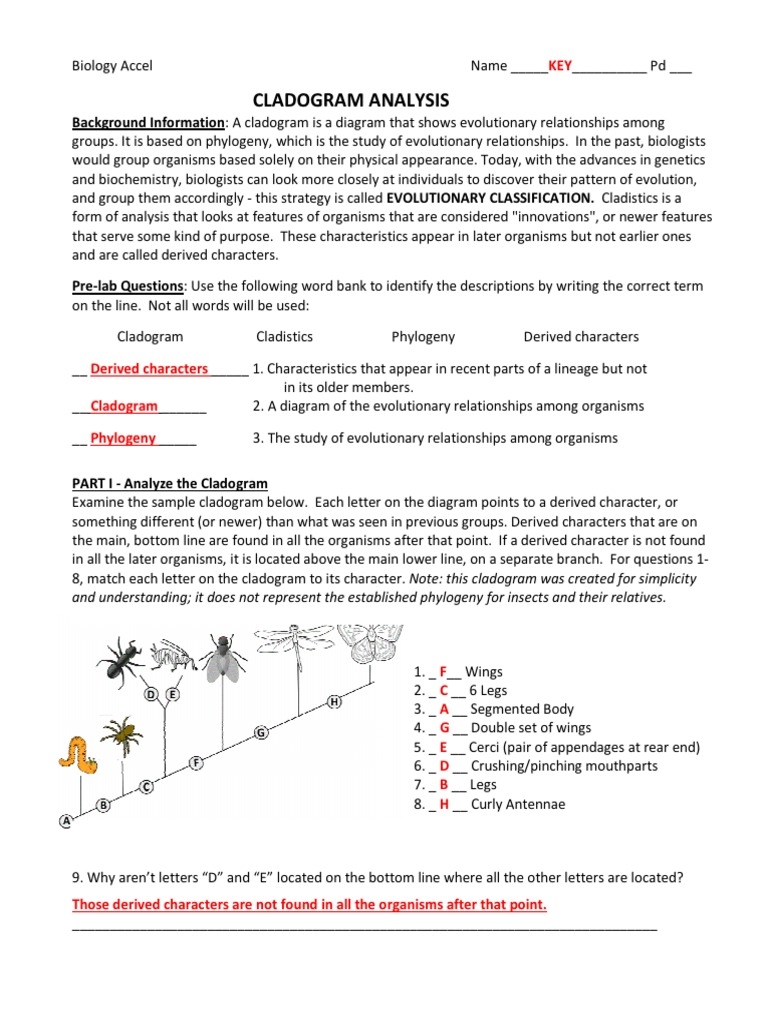Cladograms are diagrams used in biology to show the relationships between different species based on shared characteristics. They are essential tools for understanding evolutionary relationships and can help scientists classify organisms into different groups. Cladogram worksheets are a valuable resource for students to practice interpreting these diagrams and enhance their understanding of phylogenetic relationships.
By using cladogram worksheets, students can gain hands-on experience in analyzing and interpreting the evolutionary history of different species. These worksheets often contain a variety of questions and activities that challenge students to identify common ancestry, determine evolutionary relationships, and create their own cladograms. This interactive approach helps students develop critical thinking skills and a deeper understanding of evolutionary biology.
Cladogram Worksheet
One common activity found in cladogram worksheets is to analyze a given cladogram and identify the shared characteristics that define each group of organisms. Students may be asked to circle the traits that are shared by a particular group or to determine the most recent common ancestor of two species based on the diagram. This hands-on approach allows students to apply their knowledge of evolutionary relationships in a practical and engaging way.
Another common task in cladogram worksheets is to create a cladogram based on a set of given species and their shared characteristics. Students must use their understanding of phylogenetic relationships to arrange the species in a way that reflects their evolutionary history. This activity challenges students to think critically about the relationships between different organisms and reinforces their understanding of evolutionary principles.
Cladogram worksheets can also include questions that require students to compare and contrast different cladograms to identify similarities and differences in evolutionary relationships. By analyzing multiple cladograms, students can deepen their understanding of phylogenetic relationships and gain insight into the process of classification and taxonomy.
In conclusion, cladogram worksheets are valuable tools for students to practice interpreting evolutionary relationships and enhance their understanding of phylogenetic principles. By engaging in activities that challenge them to analyze, create, and compare cladograms, students can develop critical thinking skills and a deeper appreciation for the complexity of evolutionary biology.
